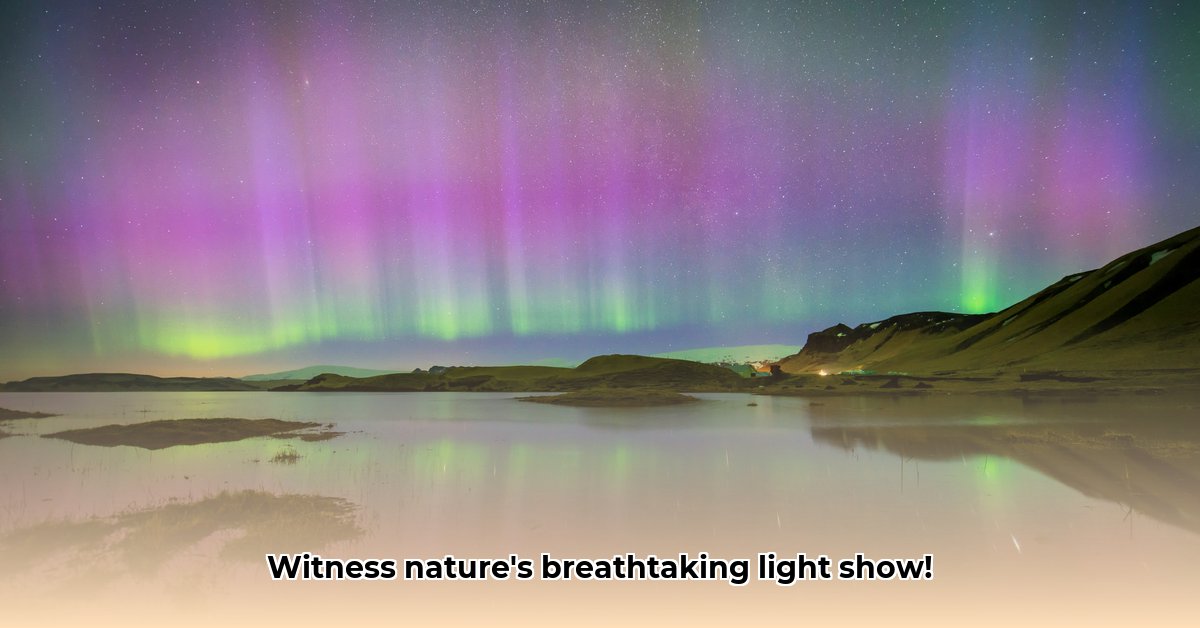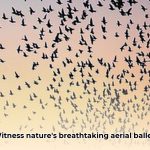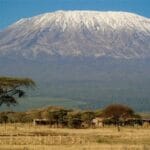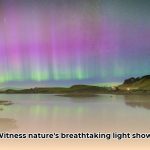Have you ever witnessed the Northern Lights? The ethereal dance of swirling colors across the night sky is a sight to behold. This article delves into the science behind this mesmerizing phenomenon. We’ll explore the interaction between the sun’s energy and Earth’s atmosphere that creates this breathtaking light show and decipher the secrets behind those captivating colors. Learn about predicting these displays, explore the myths and legends from diverse cultures, and discover tips for capturing stunning photographs. Prepare to understand and appreciate the science and beauty of the Northern Lights!
The Northern Lights (Aurora Borealis): The Science Behind Nature’s Light Show
A Cosmic Symphony of Light: More Than Just Pretty Lights
Have you ever gazed upon the night sky and witnessed those incredible shimmering curtains of light? That’s the Aurora Borealis, or Northern Lights – a breathtaking spectacle of science in action. Far from magic, this is pure physics, a dazzling display born from cosmic collisions and energetic particles. It’s a natural light show millions of miles in the making, where vibrant colors paint the night sky. This 2025 guide unveils the secrets of this phenomenon, explaining geomagnetic activity, solar events, and how they converge to create this display.
The Sun’s Energetic Outbursts and Earth’s Protective Shield
The story commences with the Sun, our solar system’s powerhouse. It continuously emits a stream of charged particles known as the solar wind. This constant flow of particles emanates from the sun and interacts with our planet. Fortunately, Earth possesses a magnetic field – an invisible shield that deflects the majority of the solar wind. However, during periods of heightened solar activity, such as coronal mass ejections (CMEs), the intensity of the solar wind surges, allowing some charged particles to penetrate the magnetic field. Understanding how solar activity influences the earth’s magnetosphere is key to grasping the aurora’s creation.
- The sun emits a continuous stream of charged particles, creating the solar wind.
- Earth’s magnetic field acts as a protective shield, deflecting most of the solar wind.
- During increased solar activity, some solar wind particles penetrate the magnetic field.
These charged particles are then guided by Earth’s magnetic field towards the north and south poles, drawn to high-latitude regions such as Alaska, Canada, Scandinavia, and Iceland.
Atmospheric Fireworks: A Symphony of Collisions
As charged particles reach Earth’s upper atmosphere, they collide with atoms of oxygen and nitrogen. These collisions are pivotal in creating the luminous displays we know as the Aurora Borealis. The colliding atoms become excited, absorbing energy from the charged particles. To release this extra energy, they emit light, resulting in the aurora’s glow. Delving into the role of atmospheric gases and the process of energy emission is essential to understanding the aurora’s formation.
A Kaleidoscope of Colors: Oxygen, Nitrogen, and Altitude
The Northern Lights appear in various shades of green, red, blue, and purple. The color depends on the type of gas the particles collide with – oxygen or nitrogen – and the altitude at which the collision occurs. Oxygen typically produces green hues, while higher altitudes may result in a reddish glow. Nitrogen often contributes blue and purple shades. These factors, including altitude dependence and the light spectrum, create the breathtaking palette of colors that characterize the aurora.
Predicting the Aurora: A Dynamic Forecast
Predicting when and where the Northern Lights will appear is a complex undertaking. Scientists employ sophisticated tools and models to monitor the Sun’s activity and Earth’s magnetic field. Satellites track solar flares and coronal mass ejections to provide probabilities and suggest time windows for heightened auroral activity. These advances in space weather forecasting have revolutionized aurora chasing and improved viewing opportunities for enthusiasts.
Legends in the Sky: Cultural Interpretations
The Aurora Borealis has captivated people for centuries, inspiring myths and legends across cultures. These cultural interpretations add layers of depth to the phenomenon, highlighting the connection between humanity and nature. Exploring traditional folklore provides a rich understanding of the aurora’s cultural impact.
Chasing the Lights: A Practical Guide
Here’s what you need to know to witness the Northern Lights:
- Location: Head to high-latitude regions, such as Alaska, Canada, Scandinavia, and Iceland, for optimal aurora viewing.
- Time of Year: Winter months offer the longest hours of darkness, enhancing visibility.
- Time of Night: Auroras typically appear after sunset and before sunrise, often peaking between 10 PM and 2 AM local time.
- Clear Skies: Clear skies are imperative for aurora viewing, as clouds obstruct the display.
- Photography: A DSLR camera with a wide-angle lens and a sturdy tripod is essential for capturing stunning photographs for better night sky photography.
Ongoing Research: Unraveling the Mysteries
The Northern Lights continue to be a subject of dynamic research to improve prediction accuracy and uncover more about the sun, Earth’s magnetic field, and our atmosphere. Scientists continue to refine their theoretical models. Despite increasing understanding, some mysteries remain, and ongoing research promises more insights into this natural phenomenon to further understand the solar-terrestrial connection.
How to Mitigate Geomagnetic Storm Risks on Power Grids During Aurora Borealis
Key Takeaways:
- Geomagnetic storms, triggered by solar flares, pose a threat to power grids, as highlighted by the GAO (1).
- These storms can induce currents that overload and damage transformers, potentially causing blackouts.
- The aurora borealis is a visual indicator of these storms at high latitudes.
- Mitigation strategies include improved forecasting, grid hardening, and technological innovations.
Solar Eruptions: Understanding Geomagnetic Storms
The sun periodically unleashes colossal bursts of energy known as coronal mass ejections (CMEs). These eruptions release billions of tons of charged particles into space. When Earth lies in the path of these particles, they interact with our planet’s magnetic field, creating a geomagnetic storm in Earth’s magnetic field. The intensity of these storms depends on the strength of the solar flare. The aurora borealis serves as a visual reminder of these events. Understanding how solar eruptions lead to geomagnetic disturbances is essential to mitigating their impact.
Geomagnetically Induced Currents (GICs): The Silent Threat
Geomagnetic storms don’t directly damage power lines; instead, they induce currents – Geomagnetically Induced Currents (GICs) – within the Earth. These currents flow into electrical grids, primarily affecting large transformers. These GICs can cause overheating and potential transformer failure. A transformer failure can trigger cascading failures, plunging regions into darkness. The 1989 Quebec blackout exemplifies this. Exploring how electrical grid resilience can protect against transformer failures is crucial for grid security.
Geomagnetic Storm Mitigation: A Multi-Faceted Approach
1. Advanced Forecasting: Accurate prediction of geomagnetic storms is essential. Satellites provide early warnings, offering time to prepare and is emphasized by experts worldwide. Developing more precise models that anticipate the intensity and impact of solar events is a top priority for early warning systems.
2. Grid Hardening: Strengthening power grids to withstand GICs involves:
- Transformer Upgrades: Designing and implementing transformers more resilient to GICs.
- Smart Grid Technologies: Utilizing advanced grid management systems to reroute power during storm events.
- Protective Devices: Installing GIC-blocking devices, such as neutral blocking capacitors that improve GIC mitigation*.
3. International Cooperation: Because geomagnetic storms are a global issue, effective mitigation requires international collaboration in data sharing, research, and standardized safety protocols. Solid global partnerships improve infrastructure security.
Dual Nature of the Aurora Borealis
The aurora borealis is a visual reminder of the power of nature. While the light display is captivating, the particles that create it are the root cause of geomagnetic storms that threaten power grids. It demonstrates nature’s capacity for both beauty and destruction. Researching auroral energy for sustainable solutions represents an emerging area of scientific inquiry.
How to Photograph the Aurora Borealis in Different Locations and Conditions
Key Takeaways:
- Mastering photography requires planning, gear, and skillful techniques.
- Success depends on accurate forecasting of auroral activity and weather.
- Essential gear includes a wide-angle lens, tripod, and extra batteries.
- A step-by-step approach to techniques contributes to excellent photos.
- Adaptability is key, as the aurora changes in intensity and duration.
The Celestial Spectacle
The Aurora Borealis is a show of natural lights. It comes from the sun as it spews charged particles—the solar wind. When this wind interacts with Earth’s magnetic field, the channels particles cause collisions with atoms in our atmosphere (mostly oxygen and nitrogen). These collision excites those atoms, causing them to release energy as light. The different gases and altitudes produce the colors we see. The intensity of the aurora correlates with solar activity; the stronger the solar wind, the more vibrant the show! It all starts with understanding solar wind activity that influences atmospheric excitation.
Predicting the Lights
Space weather forecasting provides ways to improve the ability to anticipate auroral displays. Forecasts from apps and websites give a good idea of the probability of an aurora and its potential intensity. The role that space weather monitoring improves aurora visibility
Choosing Your Location and Time
Location is important. Remote locations that are dark, away from light pollution are a great way to capture the aurora. Northern latitudes, such as Alaska, Canada, Scandinavia, Iceland, and Greenland, are ideal. Also, winter months are great with darkness to see the lights. Light pollution reduction makes for better photography.
Essential Gear and Camera Settings
- Wide-angle lens (14-24mm)
- Tripod
- Extra batteries
“A wide-angle lens and sturdy tripod are vital to capturing the magic,”
Camera settings are also crucial. Use manual mode for full control. Start with a high ISO (e.g., 800-3200) to capture the low light. Adjust your aperture for optimal depth of field (f/2.8 to f/4). Longer exposures increase light but risk blurring from aurora movement or star trails. Experiment—the aurora’s dynamic nature necessitates adjusting settings in real time.
Mastering the Shot: A Step-by-Step Guide
- Check the Forecast: Use reliable aurora and weather forecasts to plan your shoot, guaranteeing quality aurora forecasting.
- Scout Your Location: Find a dark location with a clear view of the northern horizon which assures optimal site selection.
- Set Up Your Gear: Secure your camera on the tripod, attach your wide-angle lens, and ensure your batteries are charged, setting up camera equipment preparation.
- Compose Your Shot: Include interesting foreground elements to add depth to your image, which is a fundamental composition technique.
- Adjust Camera Settings: Experiment with ISO, aperture, and shutter speed for manual camera adjustments.
- Capture the Moment: Take numerous shots adjusting your settings as needed to capture the aurora’s variations, showing dynamic shooting adaptations.
- Post-Processing: Enhance your images to bring out the best colors and details in image editing techniques.
Potential Challenges and Solutions
| Challenge | Solution |
|---|---|
| Inaccurate aurora forecasts | Cross-reference multiple forecasts and monitor real-time auroral activity. |
| Equipment malfunction | Carry backup equipment and dress warmly to protect both yourself and your gear. |
| Cold weather | Dress in layers, use hand warmers, and protect your camera from extreme cold. |
| Light pollution | Travel to remote areas away from urban centers. |
| Cloud cover | Monitor weather forecasts and be patient; aurora displays can be fleeting. |
Predicting Aurora Borealis: Mastering Space Weather Forecasts for Optimal Viewing
Key Takeaways:
- The 11-year solar cycle impacts aurora frequency and intensity.
- The Kp index is the primary indicator of geomagnetic activity.
- Short-term forecasts (30-90 minutes) use real-time solar wind data.
- Optimal viewing is typically between 11 PM and 2 AM local time.
The Sun’s Energy: The Aurora’s Source
Have you ever witnessed the night sky and the beauty of the aurora borealis? The sun has power to make lights in the sky by the solar wind that influences geomagnetic storms that are going to happen.
Earth’s Shield
Earth’s magnetic field deflects most of the solar wind, and particles go to the poles which shows the magnetic field dynamics that guides particle precipitation.
A Colorful Collision: Lights in the Sky
As these charged particles collide, they transfer energy to the lights in the sky. Atomic collision plays in the light emission.
Predicting the Unpredictable: Forecasting the Aurora
Short-term forecasts, use real-time data from satellites that predict auroral activity within 30-90 minutes. These forecasts consider factors like the Kp index, the Hemispheric Power Index (HPI), and the Bz component of the interplanetary magnetic field. Short-term forecasts help predict activities 30-90 minutes
Tools of the Trade: Understanding the Metrics
- Kp Index: This is a go-to indicator for geomagnetic storms.
- HPI (Hemispheric Power Index): Provides another measure of the auroral energy.
- Bz Component: This magnetic field component is crucial; negative values suggest a higher likelihood of a show.
Planning Your Auroral Adventure: Practical Tips
- Timing is Everything: Plan your trip around predicted solar maximums and equinoxes (September and March).
- Location, Location, Location: Choose a dark location far from city lights for dark sky preservation.
- Check the Forecast: Utilize reliable aurora forecasting websites and apps.
- Patience is Key: Auroral displays can be unpredictable, so be patient and prepared for a wait which means knowing viewing endurance strategies.
NOAA Space Weather Prediction Center
- Unveiling Superorganisms: Are Ant Colonies One Mind? - August 2, 2025
- Unveiling The Northern Lights (Aurora Borealis): The Science Behind Nature’s Light Show: 2025 Guide - August 2, 2025
- Unlock Nature’s Sounds: Brain Benefits & Well-being Guide - August 2, 2025














